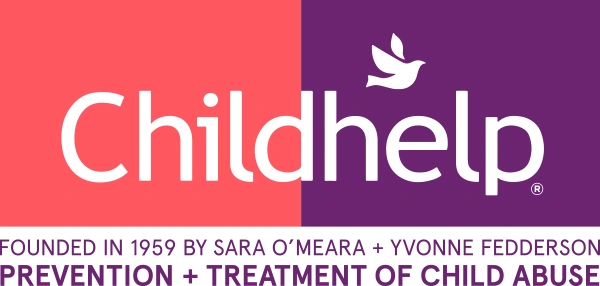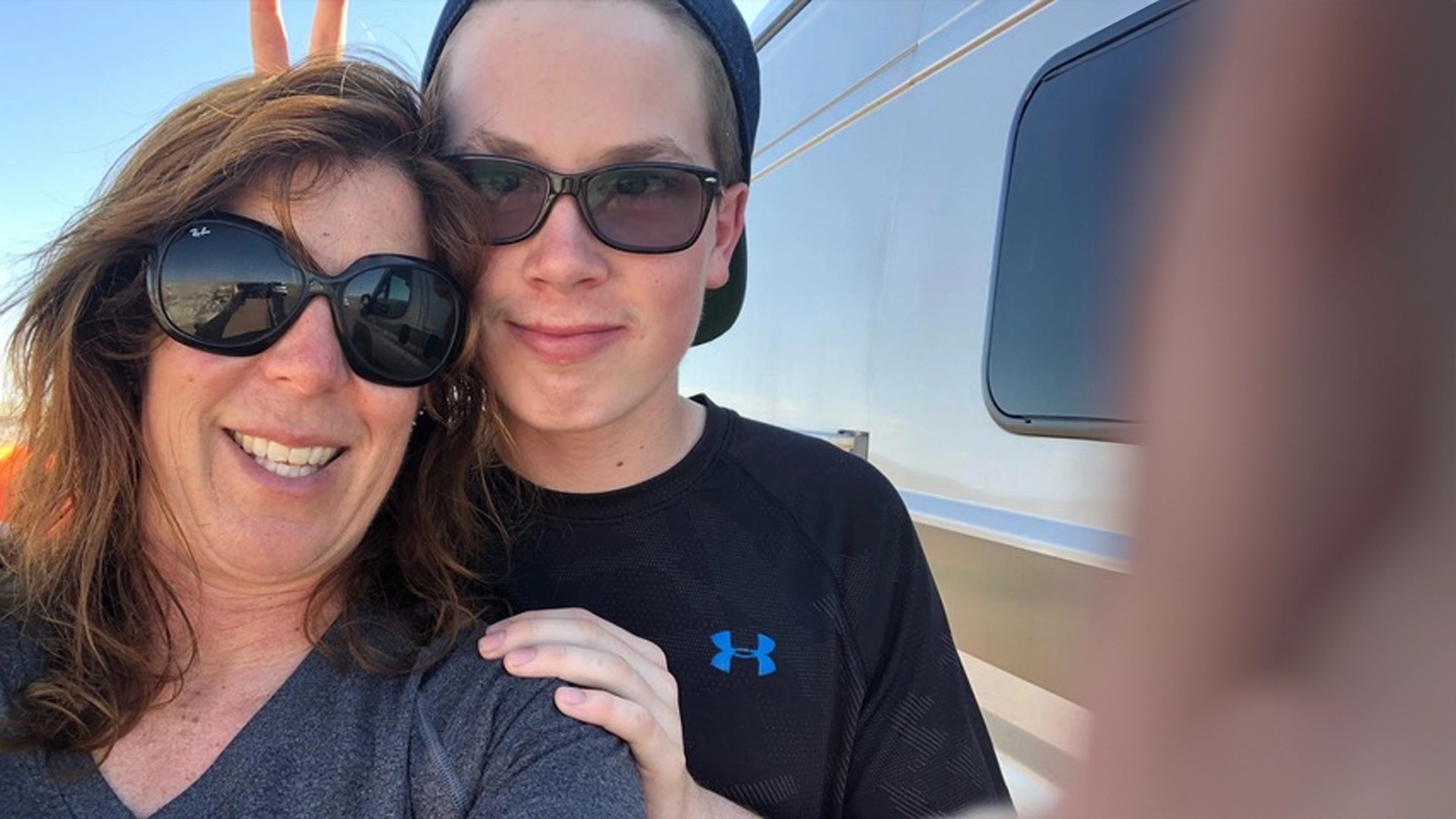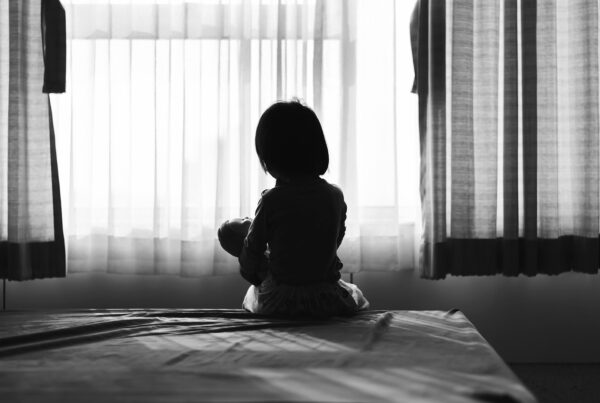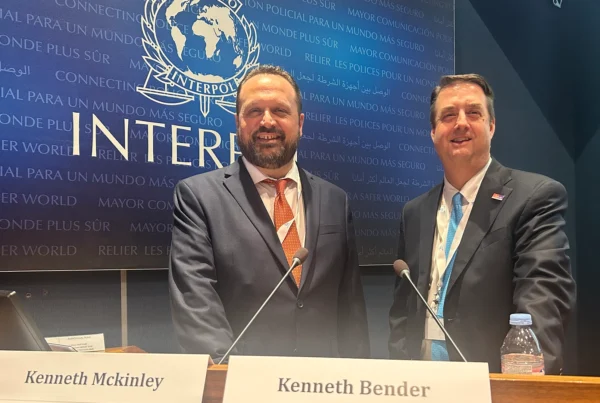*This is Pauline Stuart’s story, as told to Meghan Krein
I never thought this would be my life. I never thought I’d be writing something like this.
I used to work in finance — before I had kids. I never thought that I wanted to be a stay-at-home mom. But after Ryan and Aidan were born, just 19 months apart, I made the choice to stay home. Not because I wanted to. But because by the time I factored in daycare, it just didn’t make sense financially. And I remember thinking: If my kids are going to pick up bad habits, I want those bad habits to come from me — not someone else.
So, I threw myself into their world. I volunteered in their classrooms, worked yard duty, and then eventually took a job within their school district as a paraprofessional in special education — supporting students with learning differences and the kind of big, beautiful hearts that stay with you. I did that for eight years, shaping my schedule around my boys so we’d always be on the same break, the same routine. We were close. In step. Always close.
Ryan was my oldest — and the most outgoing kid you’d ever meet. He had a magnetic energy, the kind that drew people in. His smile lit up the room. His friends meant everything to him. He was a straight-A student, a second-degree black belt, a Boy Scout working on his Eagle Scout project, and deeply involved in FFA — raising animals, competing in public speaking, and always pushing himself to do more. He earned an $11,000-a-year scholarship to Washington State University. His future was bright and he had his whole life ahead of him.
And then, one night, someone took it all away.
How it happened
Because of COVID, my husband and I had loosened our parental controls a bit due to schoolwork being online. Ryan was 17. We monitored his devices. We were involved. But this person found him anyway — through Google Chat, pretending to be a teenage girl.
The conversation started innocently. She sent a photo and asked for one in return. Ryan was a trusting kid and didn’t see it coming, so he sent a photo.
Within seconds, the threats began.
They demanded $5,000, saying they’d send the image to all of his friends if he didn’t pay. Ryan told them he didn’t have the money, so they asked for his Instagram password. They said the password would be sufficient and Ryan believed them. But instead, they logged in, made a collage with Ryan’s photo in the center and his friends surrounding it and said they’d send it out unless he paid.
He agreed to pay, but they wanted him to use an app that required parental approval. When he couldn’t, they brought in a “money mule,” a person who helps move money through Zelle. When they saw Ryan had access to funds (his college money), they made more and more demands.
He begged them not to ruin his life. They didn’t care.
Eight hours. That’s all it took — from the first message to the last demand.
What I want other parents to know
That night, we had dinner together. My younger son Aidan and I left to check on the dog we were watching. When we got back, we brushed our teeth, said goodnight, and went to bed.
The next morning, Ryan was gone.
The police treated it as a homicide, as they do with suicide cases. We were questioned. Investigated. But Ryan had left enough behind for them to figure out what had happened.
The ICAC (Internet Crimes Against Children) team poured everything into Ryan’s case. They never gave up. Eventually, they tracked down and arrested the money mule who helped move the extorted funds. He pled guilty and was sentenced to three years but spent less than half of that time in jail.
But the real predator — the one who lured Ryan in and threatened to destroy his life — was thousands of miles away, hiding behind a fake profile and a screen. We later learned they were operating out of the Ivory Coast. Because of that, they couldn’t be charged. No consequences. No justice.
They took our son, and they’ll likely walk away untouched.
Afterward, Sergeant Sean Pierce from ICAC asked me to help bring awareness to what happened to Ryan. That’s how I started speaking out. I travel now and tell Ryan’s story to law enforcement, parents, and anyone who will listen. I volunteer my time to Team Hope, part of the National Center for Missing and Exploited Children, and I do it because no family should have to go through this alone.
There are at least 30 known boys — athletes, scholars, club leaders — who’ve taken their lives after being targeted like Ryan was. This is not just a “one-off.” This is happening every day.
I have found that far too many people think this couldn’t happen to them or their family. We had parental controls. We talked to our kids. We were a close family. I never thought Ryan would send a picture. And yet, it happened to us. It can happen to anyone.
Please, talk to your kids
Let them know: if something like this happens, they can come to you. There is no photo, no message, no mistake that is worth their life. These predators are ruthless. They don’t stop and they don’t care. They don’t consider that there is a person on the other end of the chat. It’s all about money to them. Let your kids know that you love them and will always be there to help them — no matter the circumstances.
Thank you for reading Ryan’s story. Thank you for keeping your eyes open and your hearts ready to listen.
The Childhelp Speak Up Be Safe curriculum includes an essential tool for prevention: the Staying Safe from Online Harm module. It helps children and teens recognize digital dangers, protect their privacy, and know what to do if something doesn’t feel right. Please talk to your children. Equip them with tools that could save their lives.
Visit childhelp.org/subs-online-harm/ to learn more.




